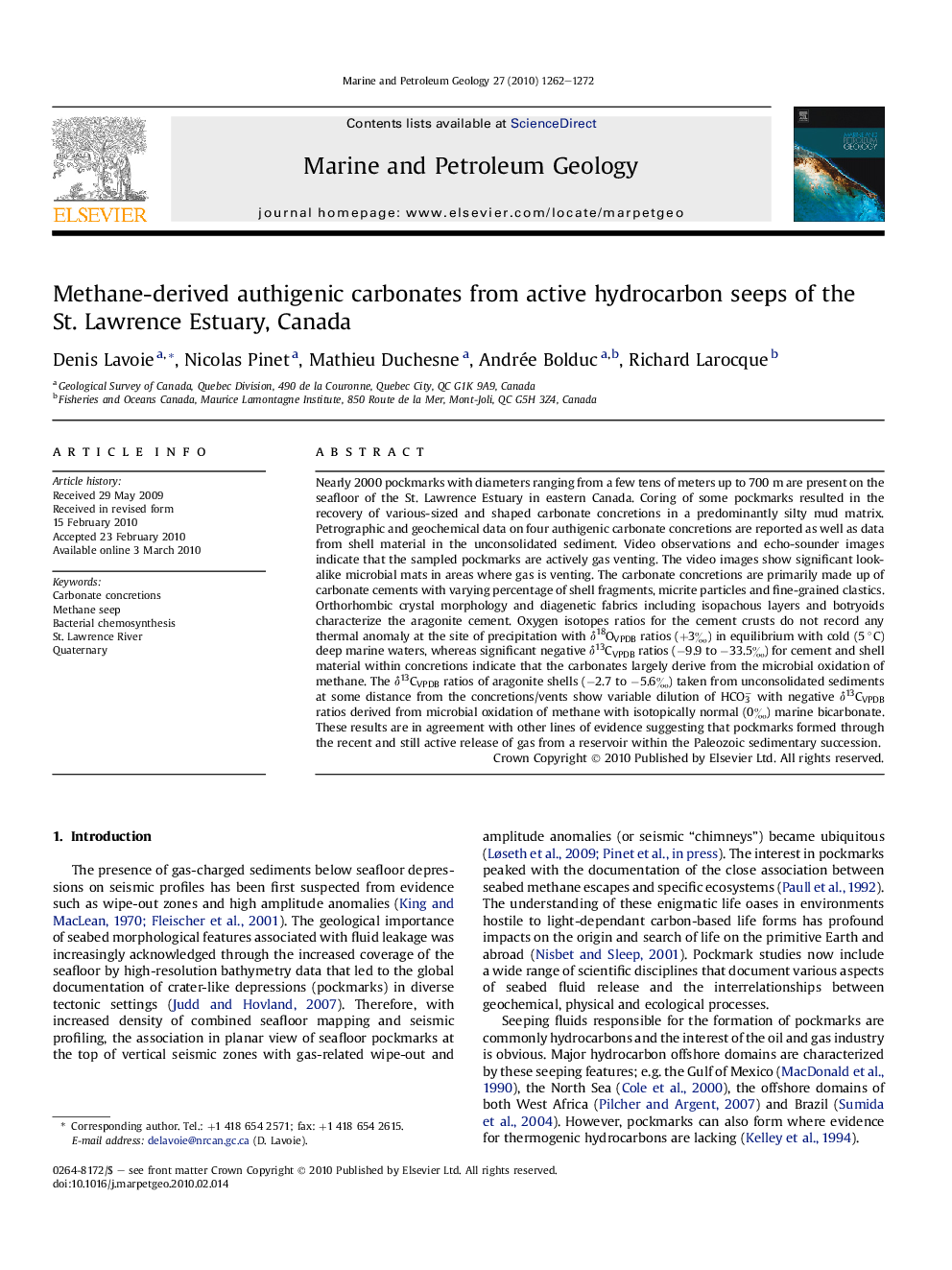| Article ID | Journal | Published Year | Pages | File Type |
|---|---|---|---|---|
| 4696172 | Marine and Petroleum Geology | 2010 | 11 Pages |
Nearly 2000 pockmarks with diameters ranging from a few tens of meters up to 700 m are present on the seafloor of the St. Lawrence Estuary in eastern Canada. Coring of some pockmarks resulted in the recovery of various-sized and shaped carbonate concretions in a predominantly silty mud matrix. Petrographic and geochemical data on four authigenic carbonate concretions are reported as well as data from shell material in the unconsolidated sediment. Video observations and echo-sounder images indicate that the sampled pockmarks are actively gas venting. The video images show significant look-alike microbial mats in areas where gas is venting. The carbonate concretions are primarily made up of carbonate cements with varying percentage of shell fragments, micrite particles and fine-grained clastics. Orthorhombic crystal morphology and diagenetic fabrics including isopachous layers and botryoids characterize the aragonite cement. Oxygen isotopes ratios for the cement crusts do not record any thermal anomaly at the site of precipitation with δ18OVPDB ratios (+3‰) in equilibrium with cold (5 °C) deep marine waters, whereas significant negative δ13CVPDB ratios (−9.9 to −33.5‰) for cement and shell material within concretions indicate that the carbonates largely derive from the microbial oxidation of methane. The δ13CVPDB ratios of aragonite shells (−2.7 to −5.6‰) taken from unconsolidated sediments at some distance from the concretions/vents show variable dilution of HCO3− with negative δ13CVPDB ratios derived from microbial oxidation of methane with isotopically normal (0‰) marine bicarbonate. These results are in agreement with other lines of evidence suggesting that pockmarks formed through the recent and still active release of gas from a reservoir within the Paleozoic sedimentary succession.
